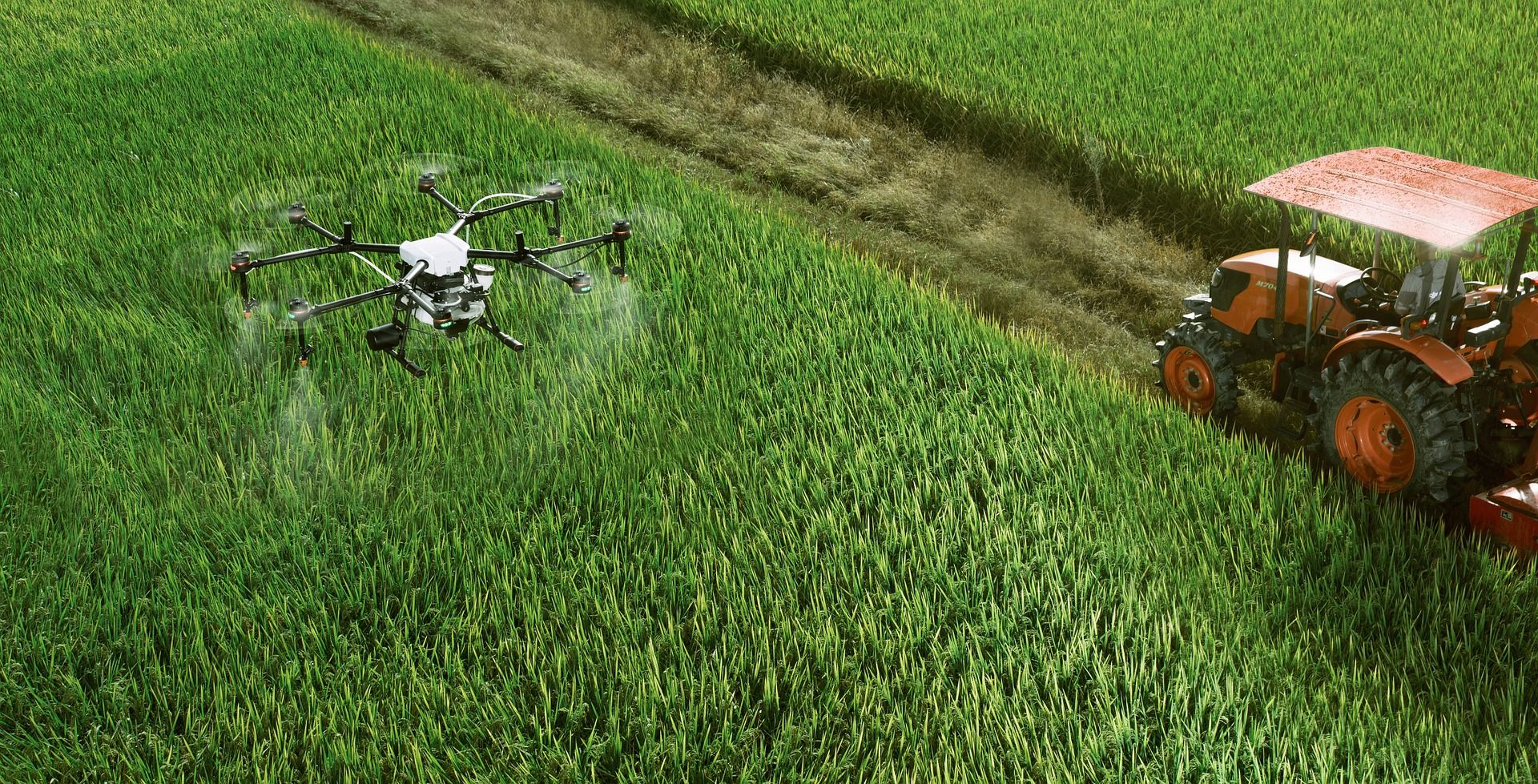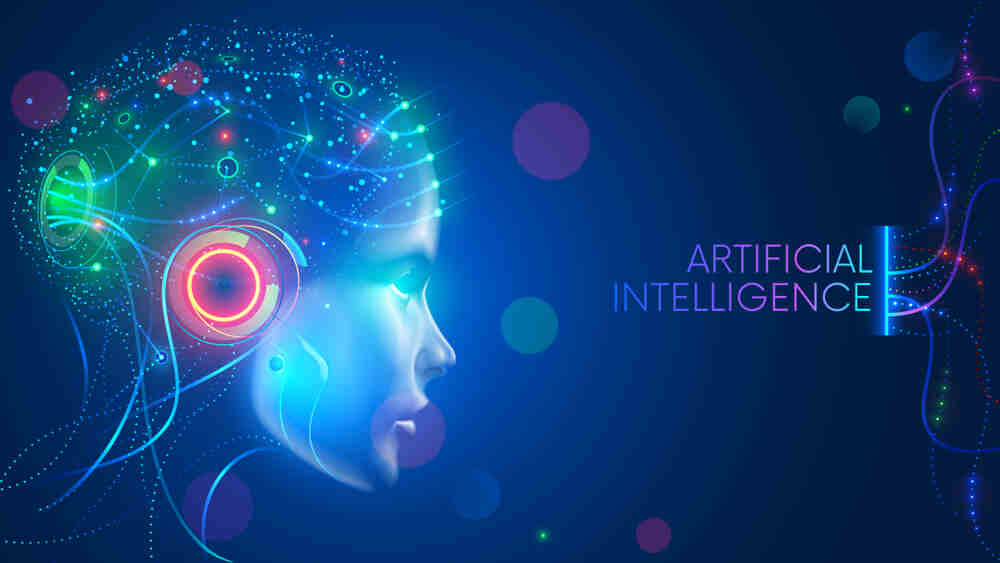Demystifying Artificial Intelligence: A Beginner's Guide to Machine Learning
Machine learning is an AI technology that's rapidly integrating into various industries, enhancing efficiency and decision-making by learning from data. It's not just for experts but is becoming part of daily life, offering advancements from personalized medicine to smarter customer service.

Machine learning is an AI technology that is not just for experts but is becoming part of daily life, offering advancements from personalized medicine to smarter customer service. As machine learning evolves, it promises to reshape our world, presenting new opportunities and ethical considerations for society.
Imagine if the gadgets and systems we use daily could learn from their experiences, much like we do, to become better at what they do. This isn't a script for a sci-fi movie—it's the reality of machine learning. This guide will walk you through the concept of machine learning in a way that is digestible for everyone, without the need for a tech background.
What is Machine Learning?
Machine learning is a branch of artificial intelligence that gives computers the ability to learn and improve from experience without being explicitly programmed. Think of it like teaching a child to differentiate between types of fruit. You show them examples of apples and oranges until they can identify them on their own. Similarly, a computer program can learn to recognize patterns or make decisions based on data. For instance, Netflix recommendations are a result of machine learning, where the system learns your preferences based on what you've watched and enjoyed before.
The market for machine learning represents the most substantial portion of the artificial intelligence sector. Machine Learning is projected to expand from approximately $140 billion to close to $2 trillion by the year 2030.
Why Machine Learning is Useful?
Machine learning is useful because it can process and learn from large amounts of data faster and more accurately than a human ever could. Machine learning can sift through immense datasets to find patterns and make decisions with minimal human intervention.
For instance, in healthcare, machine learning algorithms can analyze medical images to detect abnormalities such as tumors far earlier than the human eye can, greatly aiding in early diagnosis and treatment.
In finance, machine learning helps in detecting fraudulent transactions by monitoring patterns that deviate from the norm, protecting both the institutions and their customers from financial theft.
In the realm of customer service, chatbots powered by machine learning can handle thousands of inquiries simultaneously, providing instant support and freeing human agents to tackle more complex issues.
Additionally, in the world of social media, machine learning algorithms curate your feed, learning what content keeps you engaged and thereby enhancing your online experience.
These are just a few examples of how machine learning makes complex tasks manageable, efficient, and often more accurate than traditional methods.
Where Machine Learning Can Be Applied?
Machine learning shines in situations that involve vast amounts of data and complex decision-making. It's preferable to traditional methods when there are too many variables for humans to analyze or when the task can be automated for efficiency. Medical diagnoses, for instance, benefit from machine learning by using patient data to identify disease patterns often too subtle for the human eye.
Machine learning's applications are incredibly diverse and increasingly integral to various sectors. In the field of environmental science, machine learning models predict climate patterns and extreme weather events, helping communities prepare for and mitigate the impacts of climate change. In manufacturing, predictive maintenance systems analyze data from machinery to predict failures before they happen, thereby saving time and money on repairs.

In the agricultural sector, machine learning algorithms analyze crop yields, soil health, and weather data to provide farmers with actionable insights for increasing productivity and sustainability. In urban planning, machine learning helps manage traffic flow by predicting congestion and optimizing traffic signals.

In the entertainment industry, streaming services like Netflix and Spotify use machine learning to analyze your listening habits and suggest new songs or artists you might like, essentially personalizing your listening experience. In e-commerce, machine learning improves supply chain efficiency by predicting inventory needs, optimizing delivery routes, and personalizing shopping experiences for customers.

Moreover, in the field of education, machine learning systems can tailor the educational content to the learning pace and style of individual students, enhancing the learning experience and outcomes. Lastly, in the security domain, facial recognition systems use machine learning to identify and verify individuals in various settings, from airports to smartphones, enhancing security measures and personal convenience.
What are Machine Learning Models?
Machine learning models are the heart of machine learning—they are the tools that allow computers to make sense of and learn from data. Let's break down the concept further.
When we talk about a model in machine learning, we're referring to a mathematical framework or algorithm that has been given data to learn from. This data is often labeled with the correct answer so that the model can start to understand the relationships within the data.
For example, consider a linear regression model, which is one of the simplest types of machine learning models. It might be used to predict the selling price of a house. You would feed it historical data on house sales, including features like the size of the house in square feet, the number of bedrooms, the number of bathrooms, and the sale price. The model would learn the relationship between these features and the sale price, allowing it to make predictions about the price of a house based on its characteristics.
A neural network is much more complex. It's designed to mimic the way human brains process information. It consists of layers of interconnected nodes, or 'neurons,' each layer learning different aspects of the data. For instance, when processing human language, one layer might learn to identify individual letters, another words, and another sentences. As the data flows through these layers, the neural network gets better at understanding the structure and meaning of the language.
Decision trees are another type of model that resemble a flowchart. They make decisions by asking a series of questions about the data. For example, if a bank wants to decide whether to lend someone money, a decision tree might start by asking about the applicant's income. Depending on the answer, the tree branches out to different questions, eventually leading to a decision based on the cumulative answers.
Support vector machines are a bit different—they're used for classification. They work by finding the best boundary that separates different classes of data. Imagine you have a set of data points that belong to either of two categories, and you want to draw a line that divides these categories as clearly as possible. The support vector machine finds the optimal line (or hyperplane, in higher dimensions) that maximizes the margin between the classes of data.
To sum up, machine learning models are a diverse set of algorithms that are trained to identify patterns and make predictions or decisions based on data. They range from simple, like linear regression, to complex, like neural networks, and are selected based on the specific problem at hand. Each type of model has its strengths and is chosen for particular tasks—whether it's making predictions about continuous values, classifying data into categories, or recognizing complex patterns in large amounts of data.

How Machine Learning Models are Trained?
Training a machine learning model is a critical process that can be compared to teaching a student a new subject. Here's a more detailed look at each step of the process:
1. Collecting and Preparing Data
Data is the foundation upon which machine learning models are built. This step involves gathering data from various sources that could include databases, online repositories, or even real-time data streams. Once collected, the data must be cleaned—a process that involves handling missing values, correcting errors, and ensuring consistency. This might mean normalizing the data (adjusting values measured on different scales to a common scale), encoding categorical variables (like turning 'red', 'blue', 'green' into numerical values), or removing duplicate records. The aim is to make the dataset as error-free and uniform as possible so that the model can learn effectively.
2. Choosing a Model
Once the data is ready, the next step is to select a machine learning algorithm to train. This decision is based on the type of problem to be solved (e.g., classification, regression, clustering), the nature and amount of data available, and the desired outcome. Different models have different strengths and weaknesses, so the choice of model is crucial. For example, for a problem requiring the prediction of a continuous value, like house prices, a regression model would be appropriate. For image recognition, complex algorithms like convolutional neural networks might be used.
3. Training the Model
Training the model is where the 'learning' happens. The prepared dataset is divided into a training set and a testing set. The training set is used to teach the model. During training, the model makes predictions or decisions based on the data it's given and is then corrected by comparing its predictions against the actual outcomes. This process is repeated many times, and the model adjusts its internal parameters to minimize the difference between its predictions and the actual data. This iterative process is often facilitated by a function known as the 'loss function,' which provides a measure of how well the model is performing.
4. Evaluating the Model
After the model has been trained, it's evaluated using the testing set, which consists of data that the model hasn't seen before. This step assesses how well the model generalizes to new, unseen data. Various metrics are used to evaluate the performance depending on the type of model and problem. For instance, accuracy is commonly used for classification models, while mean squared error might be used for regression models. This step is crucial for understanding the effectiveness of the model in making predictions or decisions in real-world scenarios.
5. Refining the Model
Post-evaluation, there's often a need for refinement. If the model isn't performing as well as expected, adjustments may be needed. This could involve going back to the data preparation stage to improve the quality of the data, tweaking the model parameters, or choosing a different model altogether. This process can involve multiple iterations of training and evaluation until the model performs satisfactorily.
The training process is part art and part science, requiring a combination of technical skill, intuition, and experience. It's also an iterative and time-consuming process that often involves a lot of experimentation to get right. However, when done correctly, it can produce models that are capable of remarkable things, from driving cars to accurately predicting stock market trends.
How Machine Learning Models are Tested?
Testing machine learning models is akin to giving students a final exam after a period of learning and studying. The goal is to evaluate how well they can apply their knowledge to problems they haven't encountered before. Similarly, the purpose of testing machine learning models is to assess their performance on new, unseen data, which provides an unbiased evaluation of their predictive power and generalization ability.
Dividing Data into Training and Testing Sets
One common method is to divide the collected data into two sets: the training set and the testing set. The training set is used to teach the model, as discussed previously. The testing set, however, is put aside and used only for evaluation. The model has no knowledge of this testing set during the training phase. Typically, the data is split such that a larger portion is used for training (for example, 80%) and a smaller portion for testing (20%). This method is straightforward and effective but relies on the assumption that both sets are representative of the overall data distribution.
Cross-Validation
Cross-validation is a more sophisticated technique that seeks to maximize the efficiency of the dataset, especially when the amount of data is limited. In k-fold cross-validation, the data is divided into 'k' number of subsets, or folds. The model is then trained on 'k-1' folds and tested on the remaining fold. This process is repeated 'k' times, with each fold being used as the testing set exactly once. The results from each iteration are averaged to provide a comprehensive measure of the model's performance. Cross-validation helps to ensure that the model's performance is consistent across different subsets of data and not just a fluke of a particular random split.
Other Techniques
There are other, more complex techniques as well, like Leave-One-Out cross-validation, where the model is trained on all data points except one and tested on the left-out data point. This is repeated such that each data point gets to be the testing data once. This method is exhaustive and can be very computationally intensive but provides a thorough assessment of the model's performance.
Model Robustness
The robustness of a model refers to its ability to perform consistently across different datasets or under slight variations in the input data. Robustness is tested by introducing variations in the testing data to see if the model can still maintain its performance. For instance, in image recognition, the model might be tested with images that are slightly rotated or have variations in lighting to ensure that it can still accurately recognize objects under different conditions.
Overfitting and Underfitting
Testing also allows us to detect issues like overfitting, where a model performs well on the training data but poorly on the testing data because it has learned to memorize the training examples rather than generalize from them. Conversely, underfitting is when the model is too simple to capture the underlying trend in the data, performing poorly on both training and testing sets.
Testing machine learning models is a crucial step that determines whether the model is ready to be deployed in the real world or if it needs further tuning. A well-tested model is one that can make accurate predictions or decisions across a range of scenarios and is not just tailored to the specific examples it was trained on.
How Results of Machine Learning Models are Evaluated?
Evaluating the results of machine learning models is similar to grading a school test, where each answer is reviewed for correctness. However, in the context of machine learning, the 'questions' are the examples the model has never seen before, and the 'answers' are the predictions or classifications it makes.
Let's delve into the common metrics with simple examples:
1. Accuracy
Accuracy is the most intuitive metric—it measures what percentage of the model's predictions were correct. For example, if a weather forecasting model predicts the chance of rain for 100 days, and it gets the prediction right on 90 of those days, then its accuracy is 90%.
2. Precision
Precision is about being correct when the model says it is. For example, if a spam detection model in your email inbox says that 100 emails are spam, and only 80 out of those 100 emails are actually spam, then the precision of the model is 80%. High precision means that when the model identifies something (like spam), it is very likely correct.
3. Recall
Recall, on the other hand, measures how many of the actual positive cases the model catches. For instance, if there were actually 200 spam emails in your inbox, and the model only identified 100 of them (of which 80 were correct, as per our precision example), then the recall would be 50%. It caught 100 out of the total 200 spam emails. High recall means the model is good at identifying all the positive cases (e.g., all the spam emails).
4. F1 Score
The F1 score is a bit more complex—it's the harmonic mean of precision and recall. It's used when you want to balance precision and recall, and you'd use it when both false positives and false negatives are important. Continuing with the spam email example, if you equally care about not missing any spam emails (recall) and not marking good emails as spam (precision), the F1 score would be the metric to look at. It takes into account both the emails the model wrongly identified as spam and the actual spam emails it failed to identify.
In practice, these metrics can help guide how a machine learning model is refined. For example, if a disease screening model has low recall, it means it's missing too many actual cases of the disease, which is dangerous. The model would need to be adjusted to be more sensitive to positive cases. Conversely, if an automated system for approving loan applications has low precision, it might be giving loans to too many unqualified applicants, which would be risky for a bank.
Evaluating machine learning models with these metrics helps ensure that they are not only accurate overall but also fair and reliable in their predictions, balancing the different types of potential errors they could make.
Use Cases of Machine Learning for Various Industries
Machine learning's versatility allows it to be applied across a myriad of industries, transforming traditional practices with its predictive capabilities and data-driven insights.
1.Finance
In finance, machine learning models are employed for credit scoring, where they assess an individual's credit history, transaction patterns, and other variables to determine their creditworthiness. This process is much more efficient and can consider a larger number of complex factors than traditional scoring methods. Algorithmic trading is another area where machine learning shines, using complex algorithms that can analyze market data at high speeds to make automated trading decisions that capitalize on market trends and patterns.

2. Healthcare
Healthcare has seen significant advances thanks to machine learning. Algorithms can now detect diseases, such as cancer, from medical images like X-rays or MRIs more accurately and much earlier than before, potentially saving lives through early treatment. Personalized medicine is an emerging field where machine learning tailors treatment plans to individual patients based on their unique genetic makeup and lifestyle, rather than a one-size-fits-all approach.
3. Retail
In the retail industry, machine learning helps companies predict inventory needs by analyzing sales data, seasonal trends, and other factors, ensuring that the right products are in stock when consumers want to buy them. Recommendation systems, like those used by Amazon, analyze your past purchases and browsing habits to suggest other products you might like, significantly enhancing the shopping experience.
4. Automotive
The automotive industry utilizes machine learning in the development of self-driving cars. These vehicles use a combination of machine learning models to process inputs from various sensors, make decisions in real time, and learn from vast amounts of driving data to navigate safely.
5. Customer Service
Machine learning has significantly impacted customer service through the use of chatbots and virtual assistants. These AI-driven tools can handle a vast number of customer interactions simultaneously, providing quick responses to queries and learning from each interaction to improve over time.
6. Security and Surveillance
In security, machine learning algorithms enhance surveillance systems by recognizing suspicious activities and triggering alerts, providing a level of vigilance that is difficult to achieve with human monitoring alone.
7. Manufacturing
In manufacturing, predictive maintenance techniques powered by machine learning predict when equipment is likely to fail or require maintenance, thereby reducing downtime and saving costs.
8. Other Industries
Machine learning also has applications in other industries. In agriculture, it can predict crop yields, optimize planting schedules, and even detect pests or diseases in crops through image analysis. In energy, machine learning forecasts power demand to optimize electricity generation and distribution. For entertainment and media, it can suggest movies, games, or articles, tailoring content to the preferences of the audience.
These examples represent just the tip of the iceberg when it comes to machine learning applications. As the technology continues to evolve and more data becomes available, the potential uses of machine learning will expand, further revolutionizing industries around the world.
Conclusion
Machine learning isn't confined to the realms of cutting-edge research or the inner workings of tech companies; it's rapidly becoming an everyday part of life for people around the world. Its implications stretch far beyond the convenience of personalized shopping recommendations or the thrill of self-driving cars—it holds the potential to address some of our most pressing global challenges.
In the healthcare sector, machine learning is poised to make even more precise diagnoses and treatment plans, potentially reshaping patient care to be more effective and accessible. In the environmental sphere, it could provide critical solutions to combat climate change by optimizing energy consumption and contributing to the development of sustainable practices.
Education will also benefit as machine learning becomes more integrated into personalized learning platforms, adapting to the learning styles and paces of individual students, democratizing education, and making it more efficient. In the professional sphere, machine learning will continue to automate routine tasks, freeing humans to engage in more creative and strategic activities, thus potentially reshaping the job market and the nature of work itself.
Furthermore, as machine learning systems become more sophisticated, they will increasingly serve as collaborators in scientific research, helping to solve complex problems in physics, chemistry, and biology. They could accelerate the pace of discovery, making it possible to find solutions to previously intractable problems, from novel materials to new medical treatments.
The potential societal impacts are profound. Ethical considerations will become ever more critical as we grapple with the implications of data privacy, algorithmic bias, and the transparency of machine learning systems. As the technology advances, it's vital that we foster a broad understanding of machine learning principles, not just among scientists and engineers but among the general public, so that its benefits can be maximized and its risks managed responsibly.
Machine learning represents the pinnacle of our current technological achievements in data analysis and artificial intelligence. As we move forward, it promises not only to enhance existing applications but to open up whole new realms of possibility. Its growth will be a journey worth watching, participating in, and shaping. The future of machine learning is not just an abstract concept—it will be written by the collective efforts of individuals across diverse fields, contributing to a smarter, more responsive, and more efficient world.



